The show floor at the 2014 Consumer Electronics Show in Las Vegas may not have opened until yesterday, but product announcements and keynotes have been firing off since Monday morning. In the time since, we’ve seen a flood of new wearable technology and the chips to power them, curved TVs, further advancements in virtual reality, and all manner of hardware and gadgets.
Intel
Intel made some of the biggest splashes of CES so far, announcing a transition from the McAfee name in favor of its new Intel Security brand for data and device security software. It also introduced the Edison chip, a full Linux computer the size of an SD card built to be the brain of wearable devices.
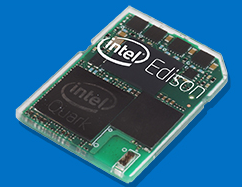
Intel’s CEO Brian Krzanich used part of his keynote address Monday to introduce a selection of wearable devices powered by Edison, detailed further down in the wearables section of our roundup.
Dual-boot Windows/Android devices
Rumored Microsoft plans to allow Windows and Windows Phone OSes to run simultaneously with Android on the same device turned out to be true, as AMD, Asus and Intel announced dual-boot devices and strategies.
Mozilla and Panasonic team up for Firefox OS smart TVs
The two companies announced plans to jointly develop a version of Mozilla’s smartphone and tablet operating system for a line of smart TVs, allowing users to interact with their Internet-connected televisions. The Firefox OS deal wasn’t the only news complicating the smart TV marketplace, though. LG made a similar deal with Palm to use its mobile software in smart TVs, and Roku, the set-top box for streaming channels such as Netflix, announced Roku TV with built-in streaming to cut out the middleman.
#!Curved TVs
LG and Samsung both debuted big bendable TV models. Samsung presented the 105-inch curved LCD TV, which presenters touted as an immersive experience that gives a 3D-like effect without wearing 3D glasses, providing more lifelike picture quality and depth. LG showed off a similar 105-inch curved HD TV billed as a “CinemaScope” screen. It also rolled out a prototype 85-inch “Bendable TV” that has a mechanical system to switch the display from a flat panel to a curved screen.
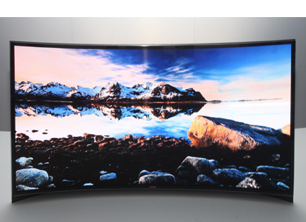
Sony
Sony’s keynote on Tuesday showed off a new streaming gaming service called PlayStation Now, supported initially on the PlayStation4, PlayStation3, PlayStation Vita and 2014 Sony Bravia TVs, with 720p streaming and cloud storage capabilities for saving games. The PlayStation Now announcement led into the company’s cloud-based video service, which extends streaming content to smartphones and tablets.
(Info on more conventional wearables, like Google Glass)
Yahoo
What was Yahoo doing at CES? Apparently, proving to everyone that it’s a news organization. CEO Marissa Mayer introduced Yahoo digital magazines, headlined by Yahoo Food and Yahoo Tech, that will debut with no banner or display ads. She also announced the acquisition of Aviate, a smartphone launcher that organizes apps based on usage data and locations.
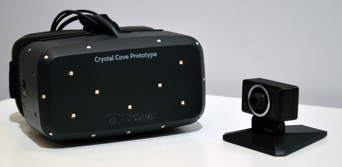
Virtual reality
Oculus VR debuted the latest prototype of the Rift virtual reality headset, codenamed Crystal Cove. The newest set of goggles comes with an OLED display that reduces blur and tracks movements better with a full positional tracking system, allowing users to lean and crouch in 3D space. The display also has what’s called low-persistence-of-vision display, which reduces the amount of information the brain sees to smooth out the virtual reality experience.
#!The best and worst of wearables
The amount of wearable and smart devices stampeding over CES 2014 is staggering, so we picked out a few of the most intriguing devices that are either too cool or too ridiculous not to mention.
After Intel introduced its Edison chip, it gave some examples of wearable tech it’s already supporting. The company debuted smart earbuds that, on top playing music, monitor heart rate and pulse, and sync with a smartphone. They also introduced a prototype smartwatch with a full phone integrated that doesn’t need to sync with a smartphone.
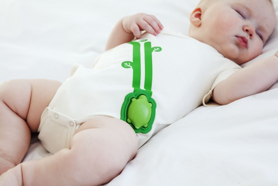
Yet for all the functionality of those first two wearables, nothing quite tops seeing a baby in a smart onesie. The article of clothing (above) contains Bluetooth connectivity in the attached turtle that sends a baby’s breathing data and vital signs to a parent’s smart coffee mug. What it doesn’t seem to track, surprisingly, is diaper changes.
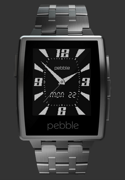
Pebble Steel smartwatch
While smartwatches are a dime a dozen at CES, Pebble’s new Steel smartwatch has made the most noise, combining its power-efficient monochrome E Ink screen, pushbutton controls, water-resistant case, and iPhone and Android compatibility with a stainless steel case, making it a watch that actually looks like a watch.
#!Lumo Lift
Lumo Lift is a smart patch that can be attached to clothing. It counts how many steps you take and how many calories you’ve burned, and it detects when you’re walking, running, sitting or lying down. The “lift” comes from the gentle vibrations the patch gives you when you’re slouching.
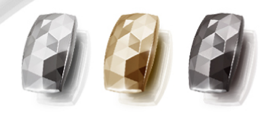
JUNE by Netamo
This smart jewelry is a connected bracelet with a UV sensor in the jewel (above) that monitors sun exposure and notifies the user via smartphone app when they need to apply sunscreen, put on a hat or wear sunglasses.
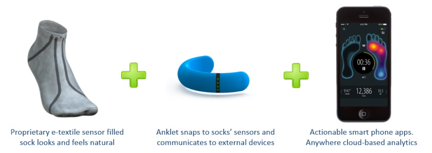
Heapsylon Sensoria smart socks
These smart articles of clothing, including t-shirts, sports bras and of course socks, have chips embedded that track not only exercise statistics, but also heat maps of your body. For instance, it can track the way your foot is landing on the pavement during running. Heapsylon’s slogan is: “The garment is the computer.”#!
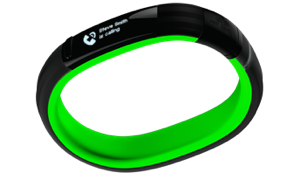
Razer Nabu smartband
A hybrid smartwatch and activity tracker that takes privacy into account, with a private message screen on underside of the rubber bracelet to hide notifications you don’t want read by anyone passing by.
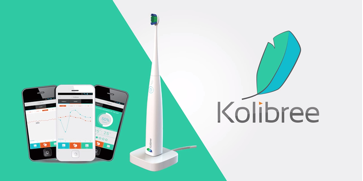
Kolibree Internet-connected Bluetooth toothbrush
Kolibree tracks how often you brush per day, calculates your average brushing time, and detects which areas you’re not brushing well enough, all synced to a smarthphone app. So begins the wave of making assorted inanimate objects “smart” just because companies can.
#!Celebrity cameos
Celebrities have popped up all over CES thus far, most infamously “Transformers” director Michael Bay, who walked off a Samsung stage after the teleprompter malfunctioned.
Doc Brown of the “Back to the Future” movie franchise—a.k.a. Christopher Lloyd—also made a flashy entrance, riding into the Gibson guitar presentation in a DeLorean complete with flux capacitor. Many “Great Scotts!” were had.
The Yahoo keynote also paraded out several celebrities, from its new correspondent Katie Couric, to an SNL Weekend Update spoof with Kenan Thompson and Cecily Strong, who were honoring the show’s content partnership with Yahoo.






